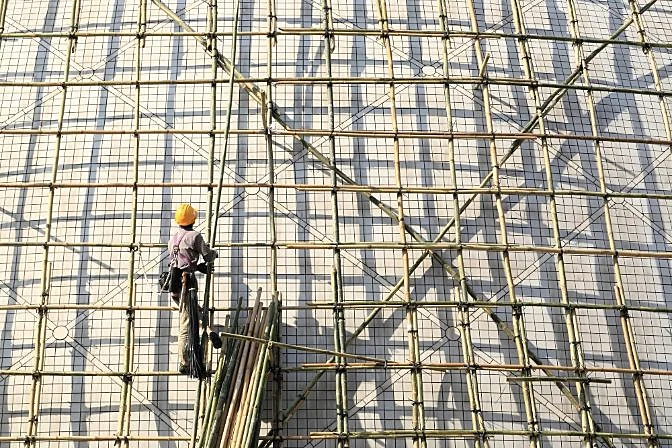THE DANGERS OF WORKING ON SCAFFOLDING
Any time a person has to work at height there is a risk associated with the work, and work on temporary structures like scaffolding is no different.
According to OSHA (the U.S. Occupational Safety and Health Administration):
- Scaffold-related accidents cause about 4,500 injuries and 60 deaths in the U.S. each year.
- Falls from scaffolding account for approximately 25% of all workplace fatalities.
- Almost 72% of those injured attributed their accident to the planking or support giving way, to slipping, or to being struck by a falling object.
- The most common safety violation on construction sites is inadequate fall protection training.
This data is just for the U.S. Extrapolating from these numbers to estimate global data, we can see that there are probably hundreds of deaths and tens of thousands of injuries related to work on scaffolding around the world every single year.

Given how common work on scaffolding is, the injury rate is not alarmingly high. But it is worth noting that scaffolding work carries inherent risks, and that, if you can avoid that work, you will improve safety for workers
Wondering what the most common dangers are associated with work on scaffolds?
Here are the most common:
- Defects. Scaffolding-related accidents are often caused by faulty scaffolding. Some examples of defects include compromised steel tubing is compromised or screws not lining up as they should.
- Falling objects. Falling objects like tools, construction materials, or debris are a common cause of injury for those working on staging. To avoid injuries associated with falling objects, a best practice is to provide a cover for each level of scaffolding.
- Weather. It can be extremely dangerous to work at height on a partially-constructed building when the weather is changing. Rain or snow can make the planking slippery, and temperature fluctuations can compromise attachment points and cause planks to loosen, crack, and fail.
- Ignoring safety standards. Numerous other factors can lead to serious and fatal accidents, including overloading scaffolding and placing scaffolding too close to hazardous energy sources.
- Inadequate training. Work on scaffolding and constructing scaffolding both call for specialized training. Scaffold builders and erectors must be trained in scaffolding construction and safety standards for the particular scaffolding they are erecting, and scaffold workers must be knowledgeable about the risks associated with scaffolding.
- Inadequate or weak planking. Scaffolding for all types of work must have sturdy planking for worker safety. Fall risks can result from weakened or inadequate scaffolding supports, posts, mast climbers, pump jacks, and other mechanisms.
- Inexperience, incompetence, and negligence. It’s extremely dangerous to work on a construction site with individuals who lack training or experience, or don’t take safety risks seriously. The negligence of coworkers can be especially dangerous when scaffolding is involved.
- Insufficient supply of safety equipment. It is still necessary to provide workers with access to appropriate safety equipment even when scaffolds are designed, manufactured, and constructed properly.
- Poor construction. Accidents on construction sites are often caused by improper scaffolding construction, which includes failing to attach all attachment points properly, failure to install bracing, or failure to install guardrails.
- Poor maintenance. To remain structurally sound scaffolding needs to be properly maintained. Old materials can wear out with time, and slippery surfaces and other safety hazards can also occur as a result of inadequate maintenance.
